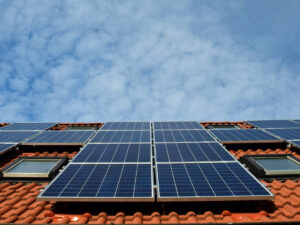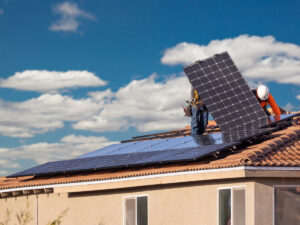Solar panels can generate electricity from both direct sunlight and diffused or indirect sunlight. While direct sunlight is the most efficient and produces the highest energy output, solar panels can still generate electricity in overcast conditions or when there is indirect sunlight, such as on cloudy days.
In Arizona, which is known for its abundant sunshine, solar panels are especially effective. Even on partially cloudy days or during early morning and late afternoon hours when the sun is not directly overhead, solar panels can still produce a significant amount of electricity. The high solar insolation (sunlight exposure) in Arizona makes it one of the most ideal locations in the United States for solar power generation.
So, while direct sunlight is the most efficient condition for solar panels, they can still produce electricity in Arizona and many other places with significant daylight even when the sun is not shining directly on them.
In Arizona, the abundance of daylight throughout the year is a key factor in the state’s success in harnessing solar energy. Here are some additional points to consider:
Solar Panel Efficiency: Solar panels are designed to capture as much sunlight as possible and convert it into electricity. They can still function at a reduced efficiency when there is indirect or diffused sunlight, though their output may be somewhat lower compared to when they are exposed to direct sunlight.
Weather Variability: Weather conditions in Arizona can vary throughout the day and across different seasons. During the monsoon season, for example, there may be more cloud cover and occasional rain, which can temporarily reduce solar panel output. However, overall, the state’s climate is well-suited for solar energy generation.
Solar Panel Tilt and Orientation: The efficiency of solar panels is also influenced by their tilt and orientation. Properly aligning solar panels to face the sun and optimizing their tilt angle can enhance their performance and maximize energy production.
Storage Solutions: To ensure a continuous power supply, many solar installations in Arizona include energy storage systems, such as batteries. These systems store excess energy generated during sunny periods for use when the sun is not shining. This is particularly useful for nighttime or during cloudy days.
Utility Reimbursement for Exported Energy: Arizona, like many other states, has policies that allow solar system owners to receive credits for excess electricity they generate and feed back into the grid. This can further offset energy costs and make solar installations economically attractive. The reimbursement amount depends on the utility.
In summary, while direct sunlight is optimal for solar panels, daylight, and even indirect sunlight are sufficient for them to generate electricity in Arizona. The state’s sunny climate and conducive policies have made it a prime location for solar energy installations. Solar power can be a reliable and cost-effective source of clean energy in the region, even when the sun isn’t at its brightest.

Monday - Friday 7AM to 5PM
Saturday - by appointment only
We proudly serve Green Valley, Marana, Oro Valley, Saddlebrooke, Sahuarita, Tucson, Vail, and the surrounding areas.


